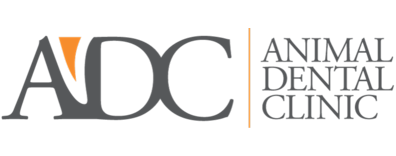Maxillofacial Reconstruction
Oral Surgery

Jaw-sparing and jaw (maxillofacial) reconstruction
Surgical procedures performed with the intention of sparing or reconstructing the jaws may be called jaw-sparing or reconstructive, but could also be referred to as occlusion-sparing or occlusion reconstruction. In veterinary medicine, salvage surgical procedures are often used to address significantly damaged jaw(s), such as with fractures or extreme bone infection; or when portions of the jaws are removed during oral tumor surgery. Salvage procedures are intended to control the infections as well as the pain caused by diseased tissue but are not intended to address jaw malocclusion. Jaw-sparing and reconstructive surgery can prevent or minimize the unfavorable outcomes associated with jaw malocclusion. The primary goals of jaw-sparing and jaw reconstruction are to achieve normal occlusion; rapid return to normal oral function and activities/lifestyle; and prevent chronic pain associated with malocclusion. Photograph illustrating the use of a combination of several surgical techniques for reconstruction of maxillofacial trauma.
Jaw-sparing (occlusion-sparing) and jaw reconstruction surgery require a solid understanding of the biomechanics of the masticatory apparatus in health and disease. When jaw surgery is required, consulting with an oral surgeon trained in reconstructive techniques can be beneficial. Jaw-sparing techniques are aimed at preserving and sometimes reinforcing specific areas of the bone considered to be essential in providing support and bone continuity. Using conservative surgical methods is recommended in situations where both addressing the pathology and preserving the occlusion are possible.
Critical defects are significant gaps between bones that can be consequences of major trauma or infection, as well as extensive surgery for tumor removal. Jaw reconstruction may be indicated to restore or improve the structure and function of the jaws. This is because conventional surgical methods to bring together bone fragments are less likely to be rewarding, as they can result in significant misalignment of the jaws (malocclusion) and the gap is less likely to heal properly. Decisions about jaw-sparing and reconstruction should be made early in the process of planning a surgical intervention to best ensure an optimal outcome. Many patients who have had jaw injuries or surgeries that have healed with abnormal occlusion are more difficult to treat because of scar tissue and temporomandibular joint abnormalities that must be overcome and reversed. Deciding whether jaw-sparing and/or maxillofacial reconstruction is a good option for a patient should also take into consideration the extent and severity of pathology (fracture, infection, tumor), timing (acute or chronic), and whether previous surgery was performed.
Jaw-sparing and jaw (maxillofacial) reconstruction
Surgical procedures performed with the intention of sparing or reconstructing the jaws may be called jaw-sparing or reconstructive, but could also be referred to as occlusion-sparing or occlusion reconstruction. In veterinary medicine, salvage surgical procedures are often used to address significantly damaged jaw(s), such as with fractures or extreme bone infection; or when portions of the jaws are removed during oral tumor surgery. Salvage procedures are intended to control the infections as well as the pain caused by diseased tissue but are not intended to address jaw malocclusion. Jaw-sparing and reconstructive surgery can prevent or minimize the unfavorable outcomes associated with jaw malocclusion. The primary goals of jaw-sparing and jaw reconstruction are to achieve normal occlusion; rapid return to normal oral function and activities/lifestyle; and prevent chronic pain associated with malocclusion. Photograph illustrating the use of a combination of several surgical techniques for reconstruction of maxillofacial trauma.
Jaw-sparing (occlusion-sparing) and jaw reconstruction surgery require a solid understanding of the biomechanics of the masticatory apparatus in health and disease. When jaw surgery is required, consulting with an oral surgeon trained in reconstructive techniques can be beneficial. Jaw-sparing techniques are aimed at preserving and sometimes reinforcing specific areas of the bone considered to be essential in providing support and bone continuity. Using conservative surgical methods is recommended in situations where both addressing the pathology and preserving the occlusion are possible.
Critical defects are significant gaps between bones that can be consequences of major trauma or infection, as well as extensive surgery for tumor removal. Jaw reconstruction may be indicated to restore or improve the structure and function of the jaws. This is because conventional surgical methods to bring together bone fragments are less likely to be rewarding, as they can result in significant misalignment of the jaws (malocclusion) and the gap is less likely to heal properly. Decisions about jaw-sparing and reconstruction should be made early in the process of planning a surgical intervention to best ensure an optimal outcome. Many patients who have had jaw injuries or surgeries that have healed with abnormal occlusion are more difficult to treat because of scar tissue and temporomandibular joint abnormalities that must be overcome and reversed. Deciding whether jaw-sparing and/or maxillofacial reconstruction is a good option for a patient should also take into consideration the extent and severity of pathology (fracture, infection, tumor), timing (acute or chronic), and whether previous surgery was performed.
Oral function
Oral function refers to the mouth’s role in an animal’s ability to eat, breathe, groom, play, work, and be generally free of pain and disease. Proper alignment of the jaws and teeth (normal occlusion) plays a major role in oral function and quality of life. When jaws are misaligned (malocclusion), oral dysfunction, trauma, and further complications with the temporomandibular joint, nasal cavity, and another local anatomy can occur.
Anatomy
In dogs and cats, the right and left upper jaws (the maxillas) are fused to each other at on their entire length at the midline where they meet. The right and left lower jaws (the mandibles) are attached to each other in the front (at the symphyses) and jointed to the skull (TMJ – temporo-mandibular-joint). The normal position of the jaws allows for normal positioning of the teeth.
Planning for Surgery
Jaw (skeletal) malocclusion caused by trauma or surgical interventions can be either acute, meaning that they are addressed immediately; or chronic, meaning that they develop over time (usually several weeks or months). When maxillofacial trauma or oral tumors occur, it may seem reasonable to address the issue at hand, then manage the resulting malocclusion (and its complications) at a later date. The problem with this approach is that acute malocclusions are ideal candidates for reconstruction (guiding the healing in the appropriate position), while chronic malocclusions are often more difficult to address.
